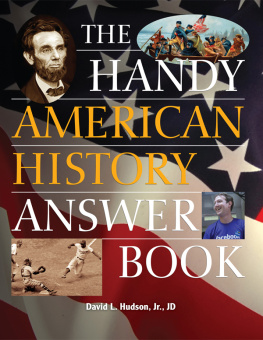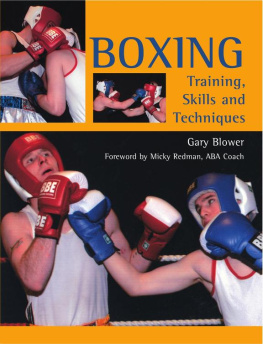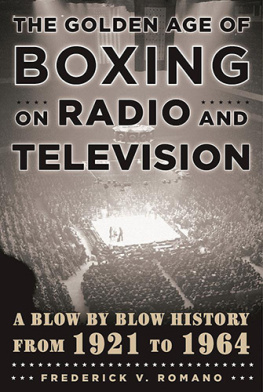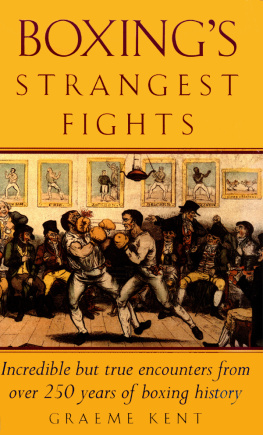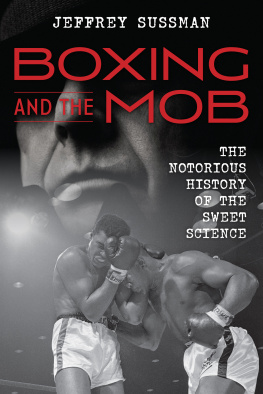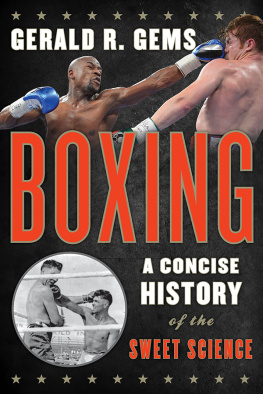DAVID L. HUDSON, JR. is an attorney, author, and licensed boxing judge living in Nashville, Tennessee. He is the author or coauthor of more than 35 books, including ABC-CLIOs Combat Sports: An Encyclopedia of Wrestling, Fighting, and Mixed Martial Arts. He is also a feature writer for Fightnews.com (http://www.fightnews.com).
Boxing in America An Autopsy
David L. Hudson, Jr.

Copyright 2012 by David L. Hudson, Jr.
All rights reserved. No part of this publication may be reproduced, stored in a retrieval system, or transmitted, in any form or by any means, electronic, mechanical, photocopying, recording, or otherwise, except for the inclusion of brief quotations in a review, without prior permission in writing from the publisher.
Library of Congress Cataloging-in-Publication Data
Hudson, David L., 1969
Boxing in America : an autopsy / David L. Hudson, Jr.
p. cm.
Includes index.
ISBN 978-0-313-37972-7 (hardback) ISBN 978-0-313-37973-4 (ebook)
1. BoxingUnited StatesHistory. 2. BoxingSocial aspectsUnited States. I. Title.
GV1125.H84 2012
796.83dc23 2012005007
ISBN: 978-0-313-37972-7
EISBN: 978-0-313-37973-4
16 15 14 13 12 1 2 3 4 5
This book is also available on the World Wide Web as an eBook.
Visit www.abc-clio.com for details.
Praeger
An Imprint of ABC-CLIO, LLC
ABC-CLIO, LLC
130 Cremona Drive, P.O. Box 1911
Santa Barbara, California 93116-1911
This book is printed on acid-free paper
Manufactured in the United States of America
To Harold Ledermanthe best person in boxing
CONTENTS
INTRODUCTION
The sport of boxing possesses a primal power that seeps into ones soul. Perhaps it appeals to innate violent instincts. Perhaps it compels attention because of its naked drama. Two menor womenattempt to batter each other senseless, to render the opponent unconscious. For whatever reason, it creates addicts out of its aficionados, who crave another high.
Think of the epic Thrilla in Manilathe fatalistic, fistic encounter between Muhammad Ali and Joe Frazier that concluded their trilogy. Consider Irish Micky Ward and the late Arturo Gatti, who waged their own trilogyalbeit on a lesser plane. Think of Jose Luis Castillo and the late warrior Diego Corrales, who beat each other senseless.
No doubt, boxing suffers from certain woes. Some wish that it would be abolished as barbaric baseness. The medical community and others urge its abolition, the underworld has seized it as its own, and the greedy have sought to exploit its participants.
For all its warts, boxing remains a beautiful art when practiced at its finest. There remains no more superbly conditioned athlete than a top-flight professional boxer. The best boxersthose who have mastered the science of pugilismpossess an uncanny, almost unnatural power over others. But, at its heart, the sport of boxing attractsor demandsattention because of its brutal simplicity.
It has inspired the best of writers to tap deep into their creativity. Consider that Ernest Hemingway, Jack London, Norman Mailer, and Joyce Carol Oates have committed their considerable literary talents to writing about the sport.
Boxing in America: An Autopsy takes a panoramic view of the sport of boxing by covering different fighters, different eras, and different subjects. Much of the book focuses on the dominant heavyweight champions of certain time periods. There are many great fighters in the lighter weight classes, but the heavyweight champions have garnered the most attention and the most acclaim. Just as the United States Supreme Court is known by the last name of the Chief Justicethe Warren Court after Chief Justice Earl Warrenboxing often is known by the holder of the heavyweight crown. We speak of the age of Louis, the age of Ali, or the age of Tyson.
John L. Sullivanthe last bare-knuckle heavyweight championdominates the discussion in chapter 1. The bravado, charisma, and natural punching power catapulted the Boston Strong Boy to fame and fortune. He became a bona fide American sports hero.
Chapter 2 focuses on as compelling and divisive a subject that the United States of America ever has grappled withthe specter of race and racism. For many years, an abject color bar prevented the top black fighters from receiving their just dueto quote former heavyweight champion Larry Holmes. The centerpiece of chapter 2 focuses on the life of Jack Johnson, the colorful, controversial champion who inspired visceral hatred from white America.
Johnson cast a long shadow over the sport of boxing, long enough that it took years for another African American to receive a shot at the heavyweight crown. Chapter 3 looks at a man who became a genuine American heroJoseph Louis Barrow, better known as Joe Louis. The Brown Bomber held the heavyweight championship for more than a decade, defending his title an astonishing 25 times.
Louis started a trend that continued for many yearsof African Americans dominating boxing in the heavyweight division. A prominent exception was an Italian American from Brockton, Massachusetts, named Rocky Marciano (covered in chapter 4). The Rock never lost a professional fight, compiling a record of 490. He personified the 1950s, when America felt good about itself, a golden age of sorts.
The 1960s were a different, more volatile time in U.S. history. The civil rights movement and the Vietnam War created a vortex of social activism unmatched in modern U.S. history. Out of this mix came a loquacious lightning rod named at birth as Cassius Marcellus Clay, covered in chapter 5. He converted to Islam, changed his name to Muhammad Ali, and became a vilified figure. This hated figure later became the most recognizableand perhaps most belovedfigure on the planet. He truly was incomparable.
Turning from the incomparable to the improbable, there perhaps is no greater comeback in the sport of boxing than that of a former champion in the 1970s who returned to the ring amid cries of ridicule in the late 1980s as an overweight preacher. This former sullen monster of a man literally transformed himself into a different person and regained the heavyweight title in the most improbable fashion at age 45. Chapter 6 tells the inspiring story of Big George Foreman. Chapter 7 then tells the incredible story of Iron Mike Tysona compelling if tragic figure in the sport of boxing.
After examining several ages of boxing through the prism of heavyweight greats, the book turns to other serious topics. Much of the book focuses on dominant champions and top contenders. But the lifeblood of the sport, the club fighters who ply their trade without fanfare, are called journeymen. They travel to other fighters hometowns on short notice against long odds. Most of the time, journeymen lose either legitimately or by hometown decisions. But sometimes they reach up and grab the brass ring. Prospects and champions start their career by facing these fighters. Chapter 8 highlights some of the more unusual journeymen of recent vintage in American boxing.
Chapter 9 focuses on the most controversial aspect of boxing: death in the ring. Boxing inflicts punishment on its combatants in most brutal fashion. While a precious few boxers have become nonagenariansformer champion Max Schmeling lived to age 99many have not survived brutal ring encounters. The images of a beaten Benny Kid Paret slumped in the corner still horrify those who saw it. Too other pugilists have met the same tragic end.


